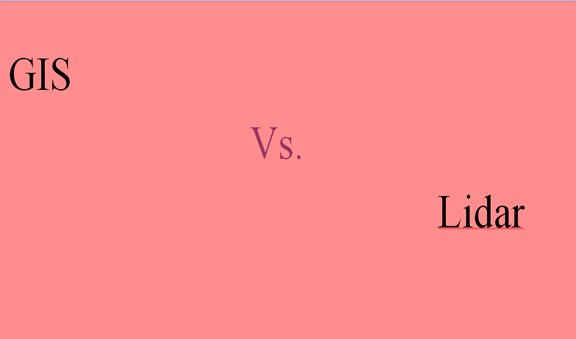Technological advancement has led to the introduction of various geographical-related technologies. GIS (Geographic Information System) and Lidar (Light Detention and Ranging) are some of the never-ending examples. These two technologies have proved to be beneficial in examining the earth’s surfaces. These two techniques may have similar features and functions and seem to be related. However, they are not similar as they may be viewed.
Differences:
1. Definition
GIS- the initials stand for Geographic Information System, it is a computer system to analyze, gather, capture and manage geographical features.
Lidar- the initials stand for Light Detention and ranging technique; it is a remote sensing technique used to measure and determine ranges and uses light in the form of a pulsed laser to perform its operations.
2. How they work
During the execution of their duties, these two methods air out their indifferences.
GIS- it works based on collecting the already recorded information, analyzing them, and maligning. Therefore, it is like a computer framework for collecting, analyzing, and managing the already collected data.
Lidar- This method greatly uses laser lights; these lights are mounted on the plane or satellite and, through the remote sensing technique, measure the exact distance of any given object on the earth. The measurements are then used in geospatial calculations.
3. Data accuracy
The accuracy of the data depends on its primary source. Thus different data collection methods may provide accurate or inaccurate data.
GIS- the accuracy of the data produced by this technology may not be reliable as it is prone to poor sources of data since the method greatly depends on other technologies as its main source of data.
Lidar-However, in this technology, things are different. It offers incredibly accurate and more reliable data as it is the primary source of data, and also it involves high-quality equipment that can even detect the distance of small objects.
4. Location of operation
This refers to the place or location where the devices of these technologies are located during the execution of their duty.
Since GIS devices are computer-related systems, they are found in the research laboratory or a building set aside for such operations.
Lidar-unlike has it is in GIS; devices that come along with this technology are airborne systems. This means they are located in the space or sky while executing their duty.
5. Ability to store information
GIS-since GIS is a computer system, and it allows user to store and retrieve information when needed.
Lidar- unlike GIS that can store information, Lidar technology plays the role of sensing and measuring distance and cannot store information for future uses. Also, it cannot be used to display data.
6.
Source of power
For any device to operate, power is needed. Power is the driving force that enables the equipment to operate.
GIS- the equipment found within this technology can rely on any source of power since they are found on the ground, and thus they are not limited to any source.
Lidar- lidar equipment are airborne devices, and thus they are limited to only a few sources of energy. Solar energy and charged batteries are the main sources of power in this technology.



